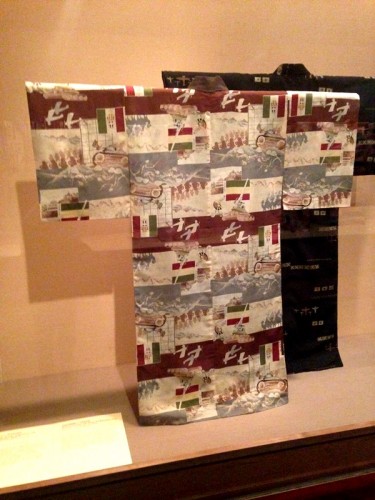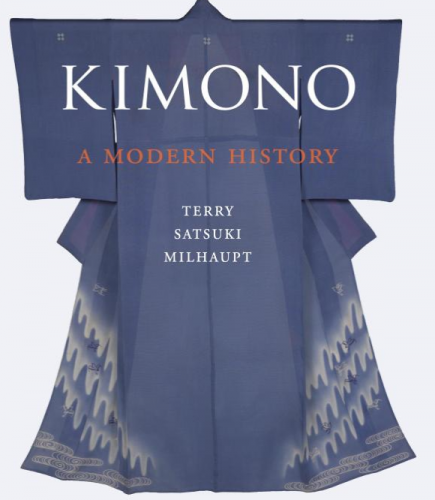Review
“Kimono: A Modern History,” The Metropolitan Museum of Art
September 27, 2014–January 19, 2015
“Kimono: A Modern History,” housed at the Metropolitan Museum of Art through January 2015, delves into the shifting roles and designs of the kimono throughout its history. As one of the most recognizable icons of Japan, the kimono is itself a narrative: its construction, evolution, and place among other objects (such as paintings, prints, books and ceramics) provides endless insight into a nation’s fashion trends as well its cultural, social, and political milieux. Taken from The Met’s own collection and borrowed from, among others, the Boston Museum of Fine Arts and the John C. Weber Collection, over 50 kimonos are currently on display.
Largely organized by chronology, the show tracks the kimono’s transformation from an everyday garment in the eighteenth century to an occasion-specific symbol in the present day. The show dedicates much of its space to the Edo Period from 1615 to 1868, during which kimonos acted as social signifiers and varied greatly among classes. While an extravagance and attention to detail can be seen in those kimonos belonging to the wealthy, a simpler and more practical design–often tailored to one’s labor–can be seen in those belonging to the working class.
Also included in the exhibition are firemen’s jackets from the Meiji period (1868-1912). Made of thick quilted cotton and featuring images of gods and warriors, they are juxtaposed with the period’s farming kimonos, which are composed of recycled rags. In the area designated to the Taisho Period (1912-26), The Met has displayed several romantic pieces, whose bright colors and bold design reflected Japan’s prosperity and optimism during the early twentieth century.

Jean-Charles Worth (French, 1881-1972), Woman’s Evening Coat, 1910-20. Silk velvet, silk satin collar, cuffs, and lining. Photo: Miljak

Woman’s Kimono with Planes and Hinomaru Flags, Showa period (1926-89), ca. 1940s. Silk kasuri with gold thread. Photo: Miljak
The last section of the exhibition provides an overview of the national and international impact of the kimono, displaying postcard advertisements of kimonos from department stores, and cultural posters. The garment that closes the show is a black wool kimono-style coat by American designer Bonnie Cashin, painting the kimono as an influential item not only in Japan, but also in the West, underscoring its significance as both a fashion item and a transcultural, migratory icon.
—Ana Miljak



























